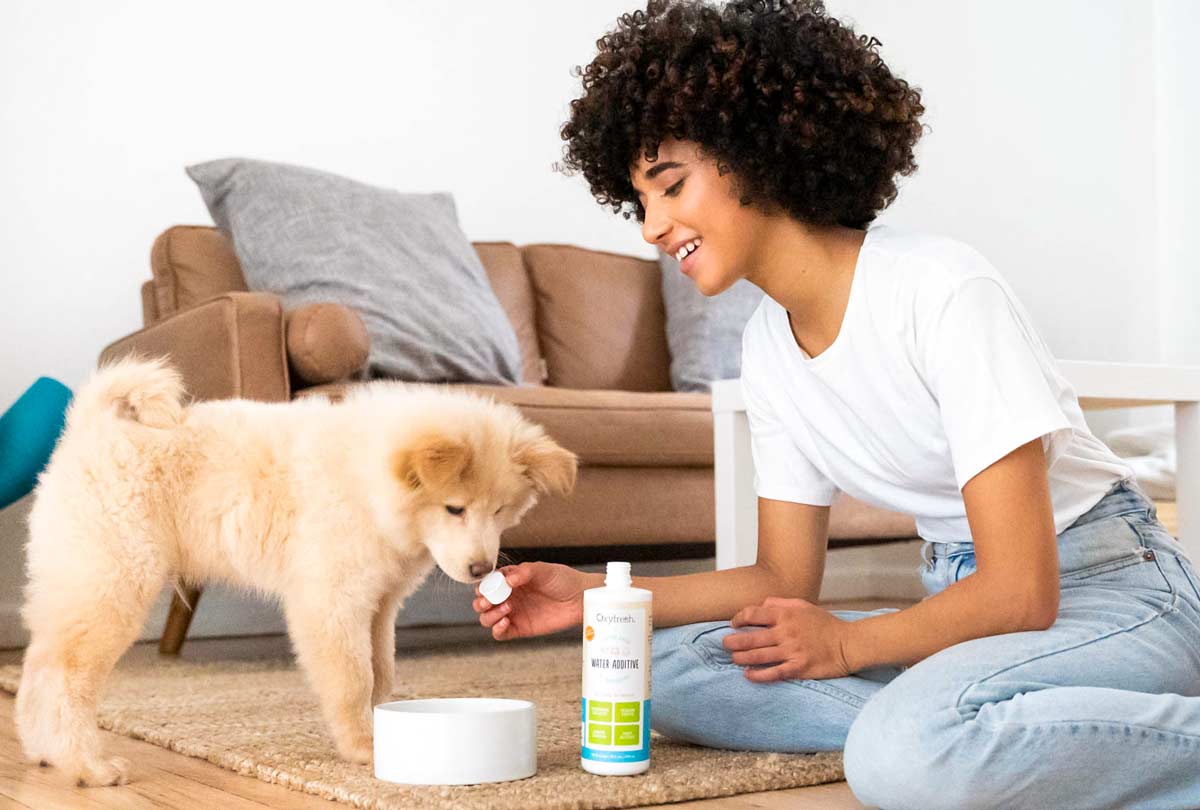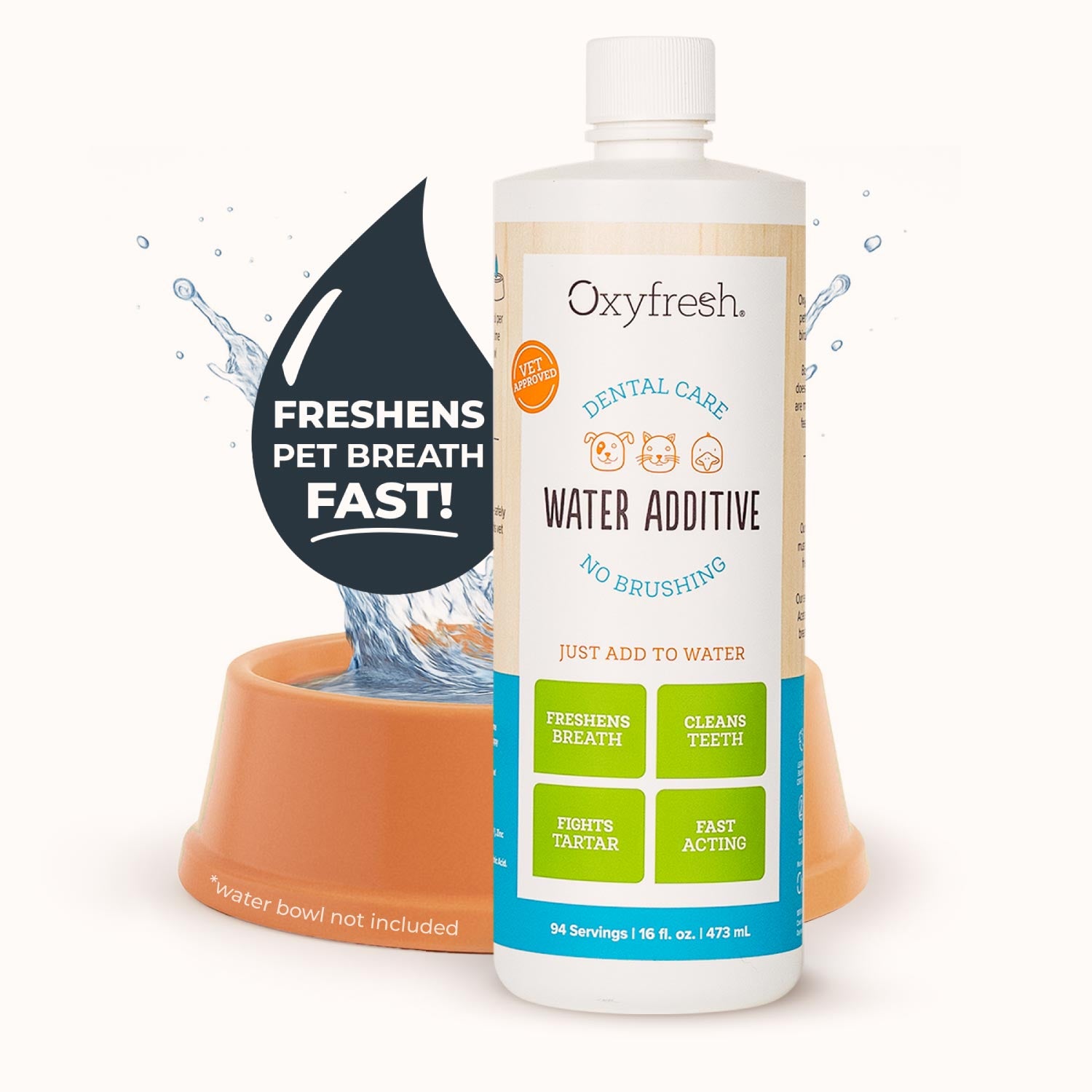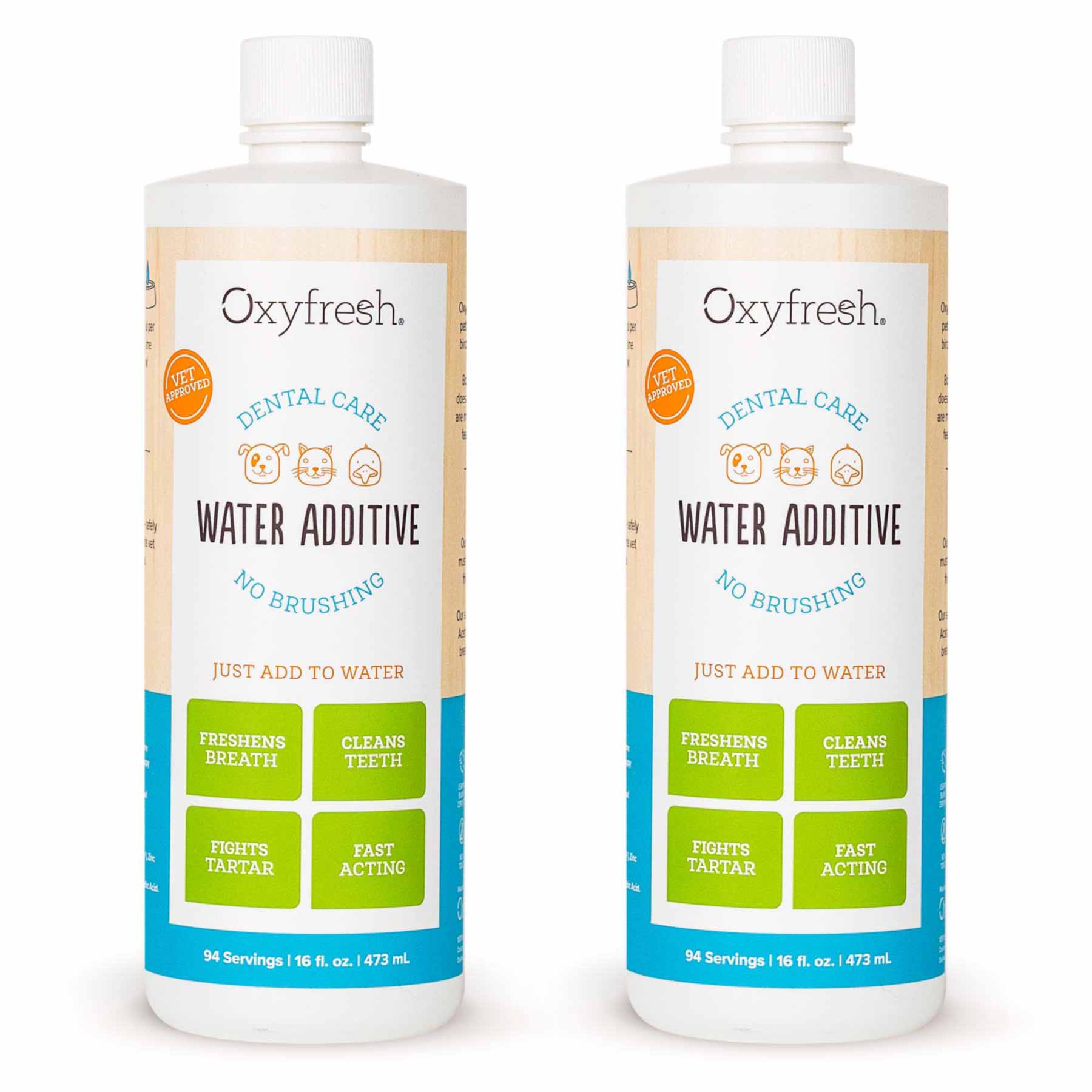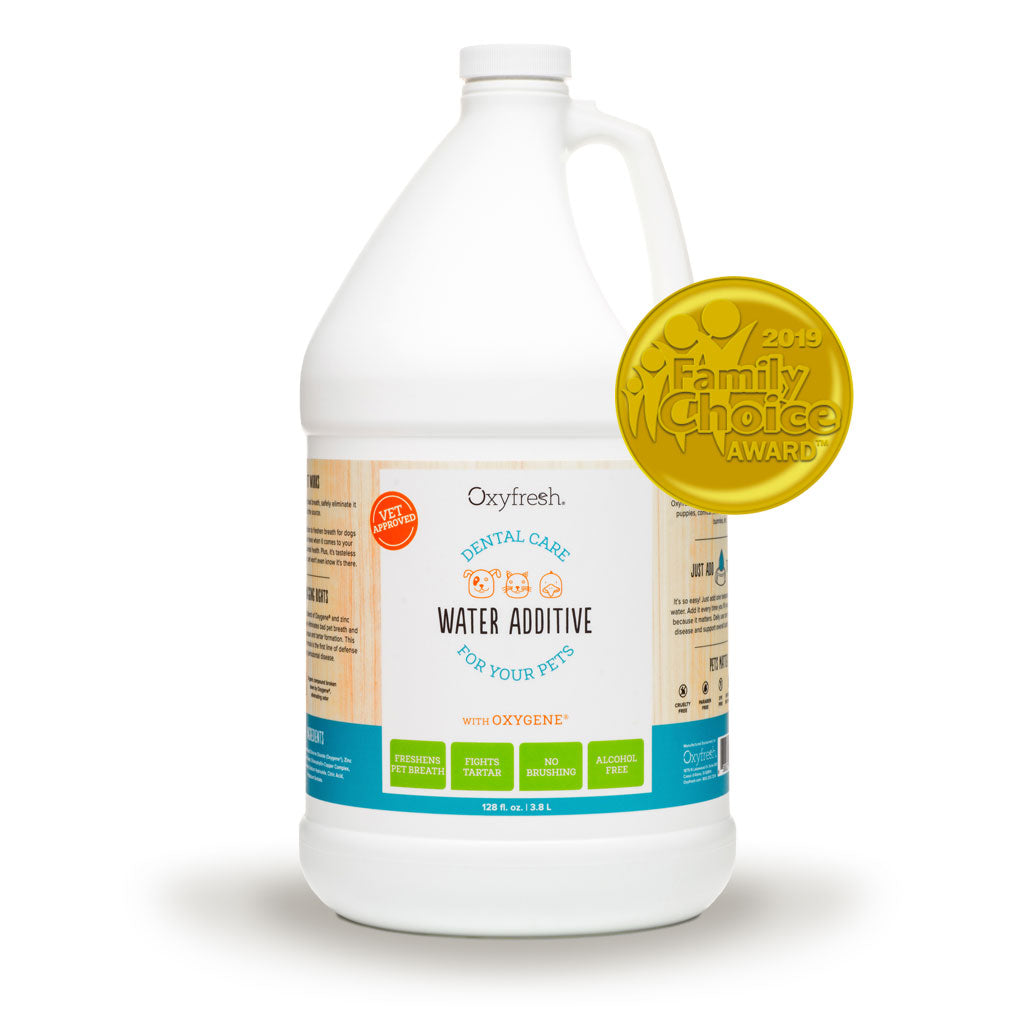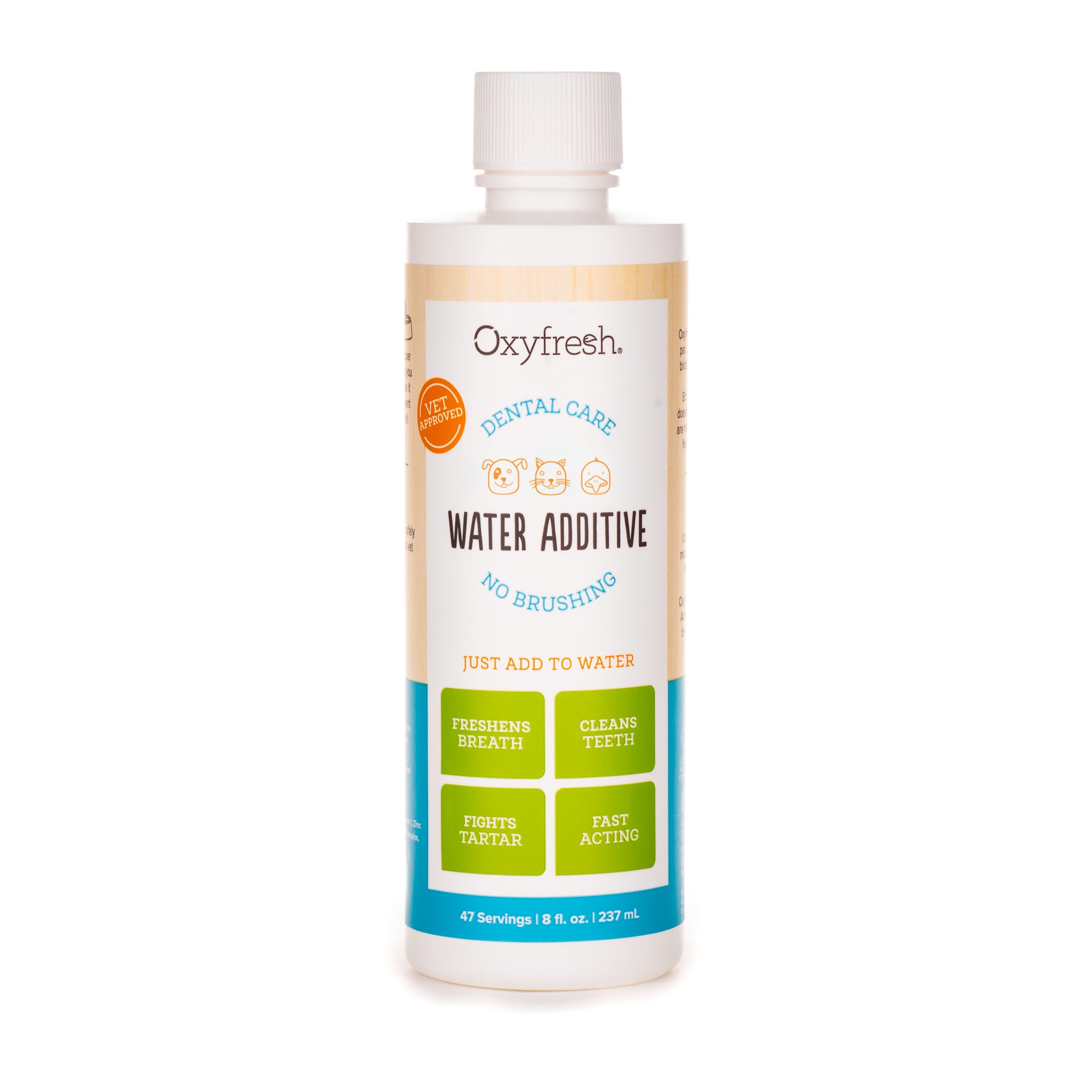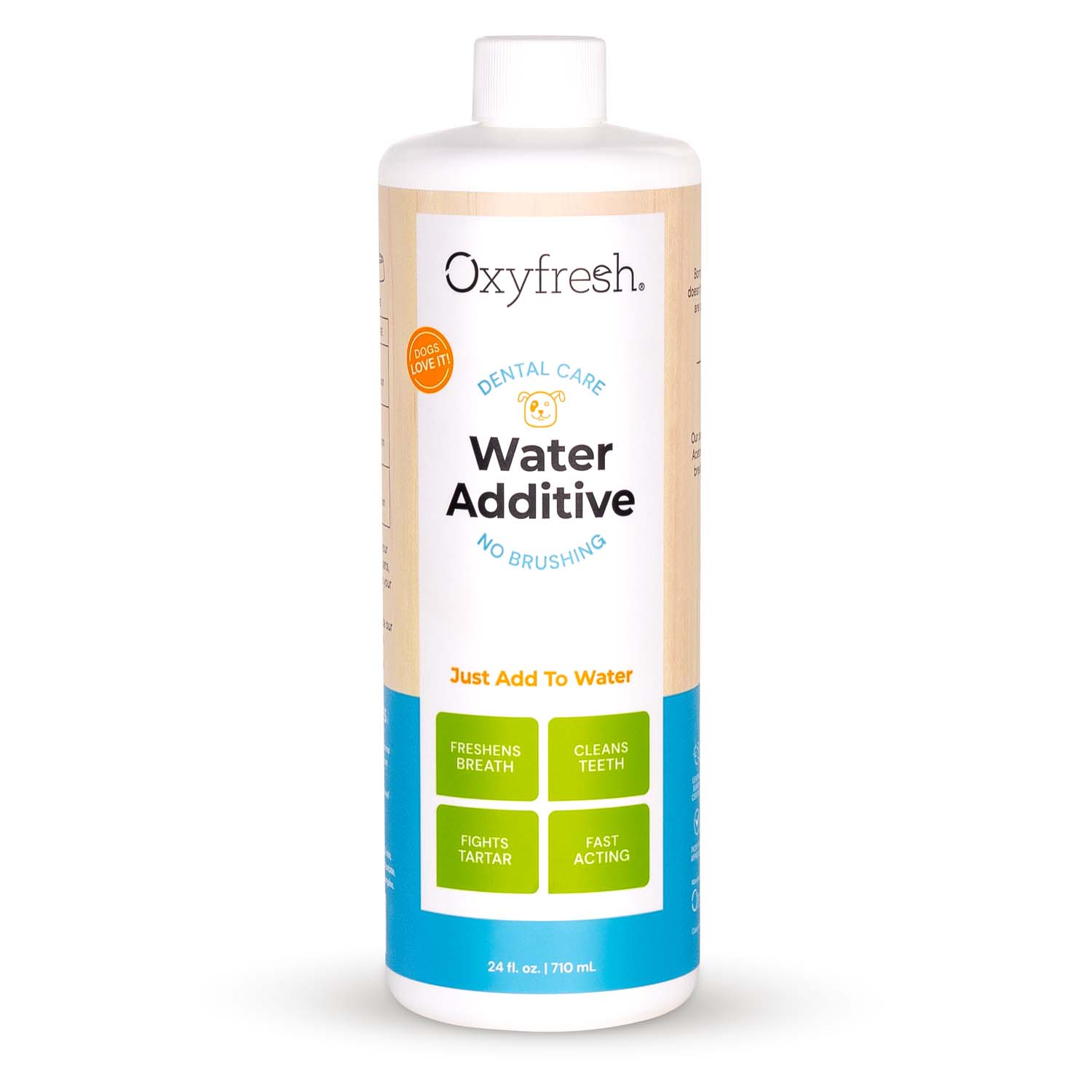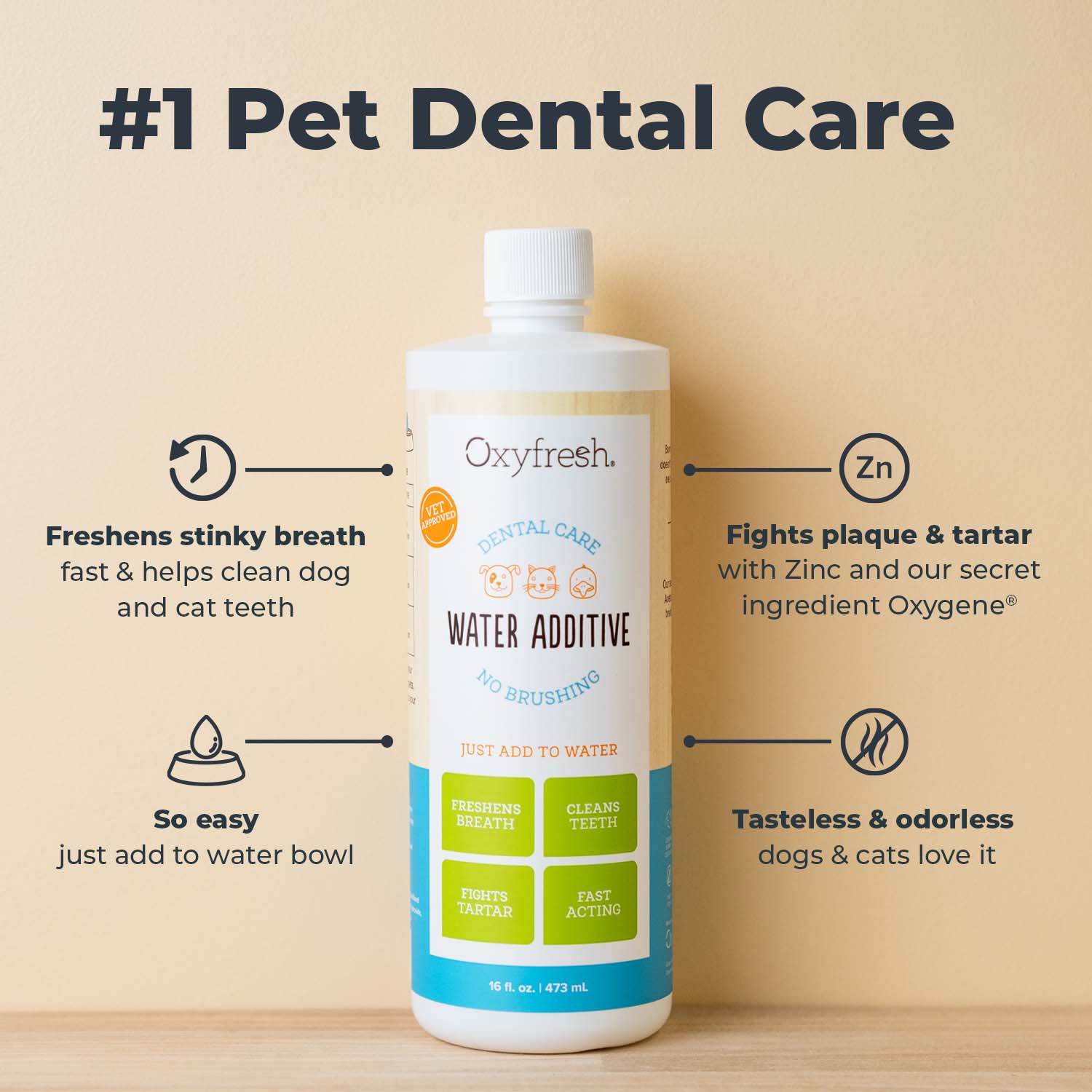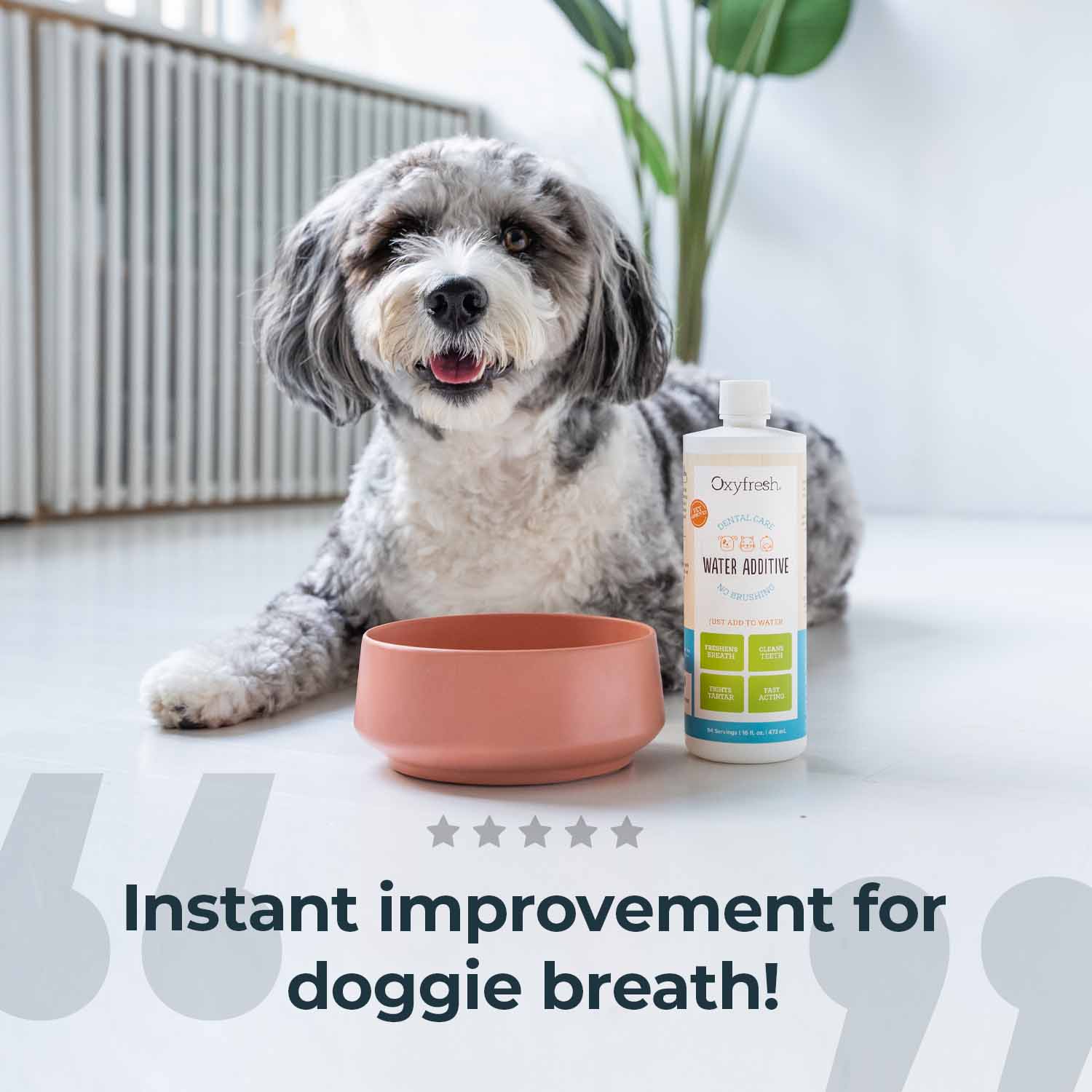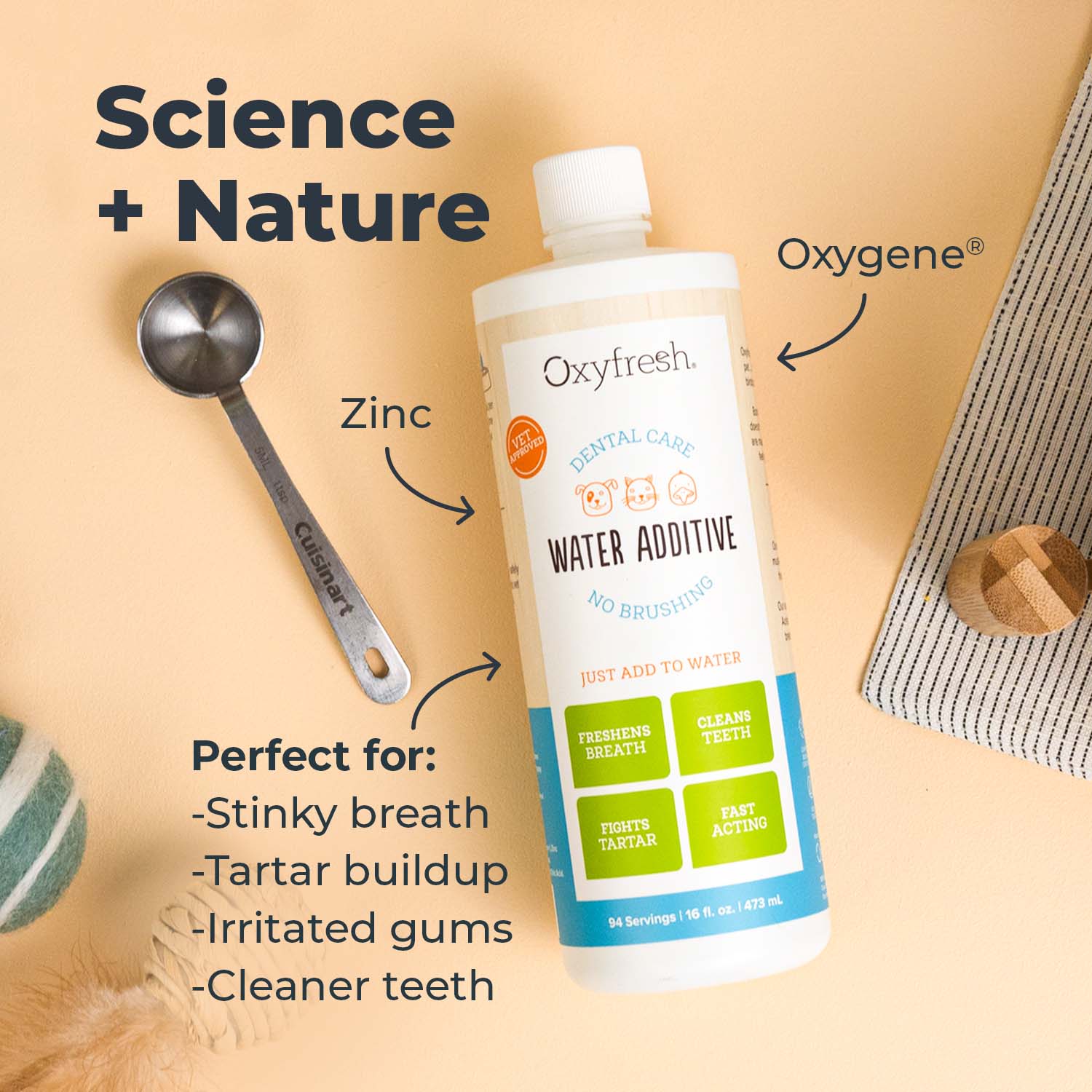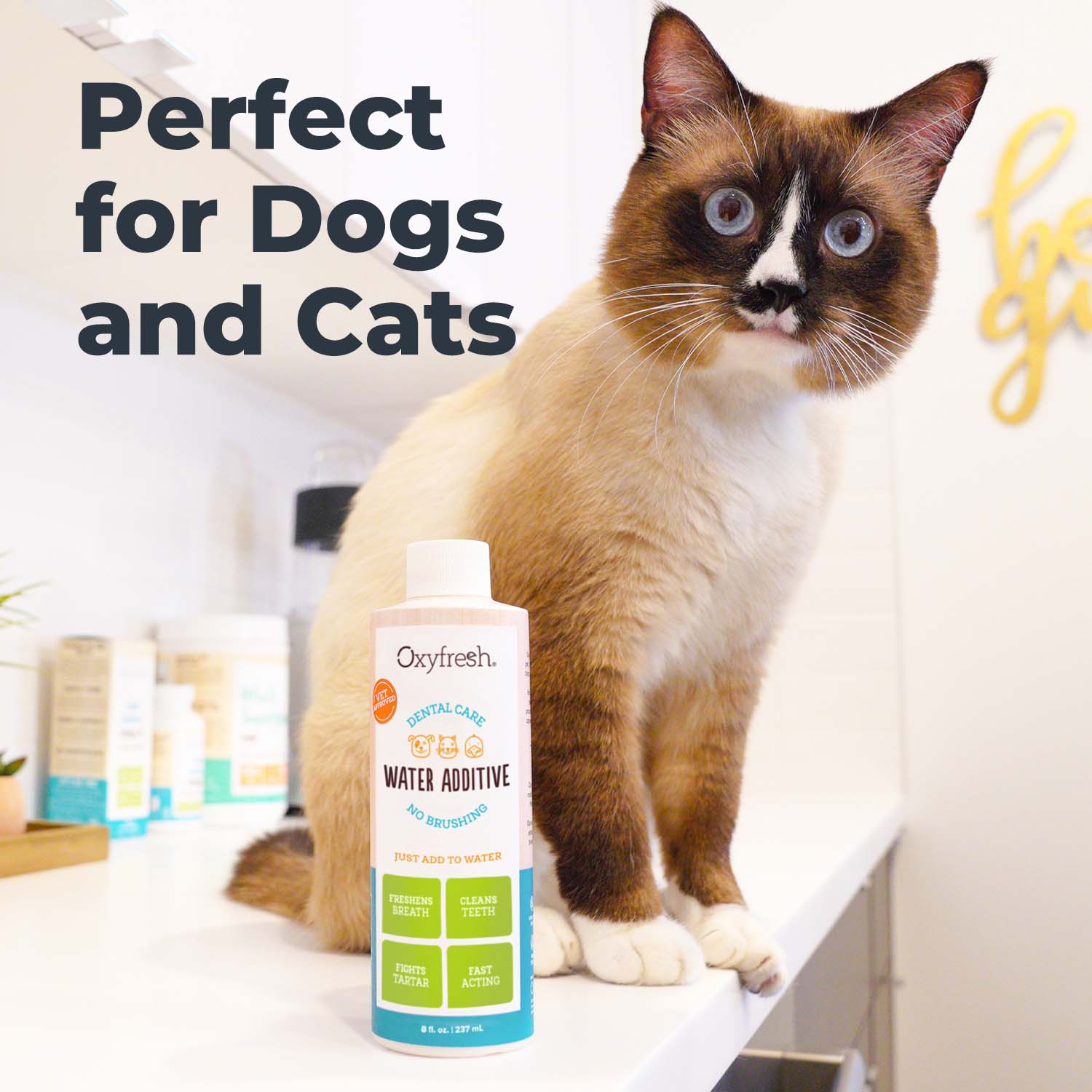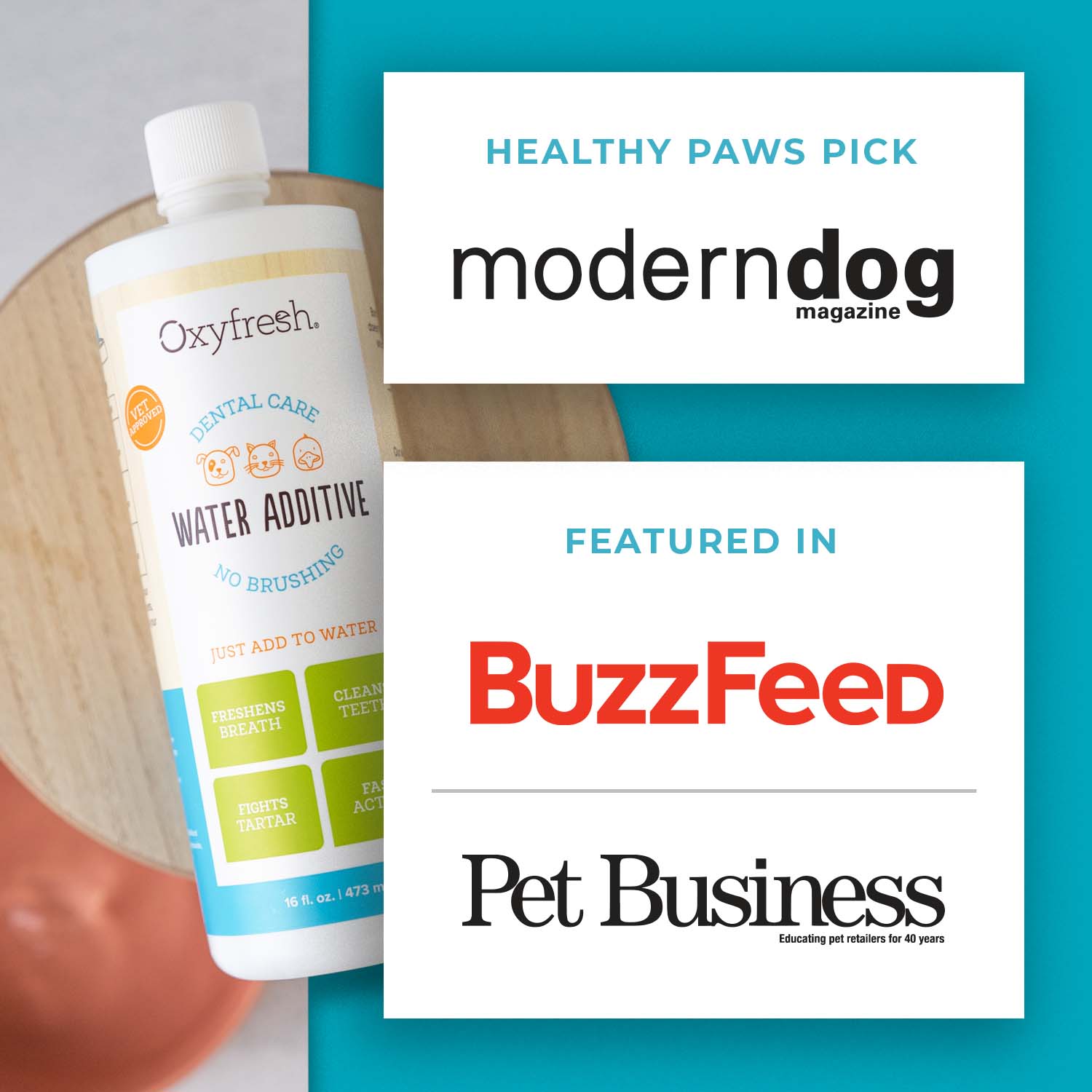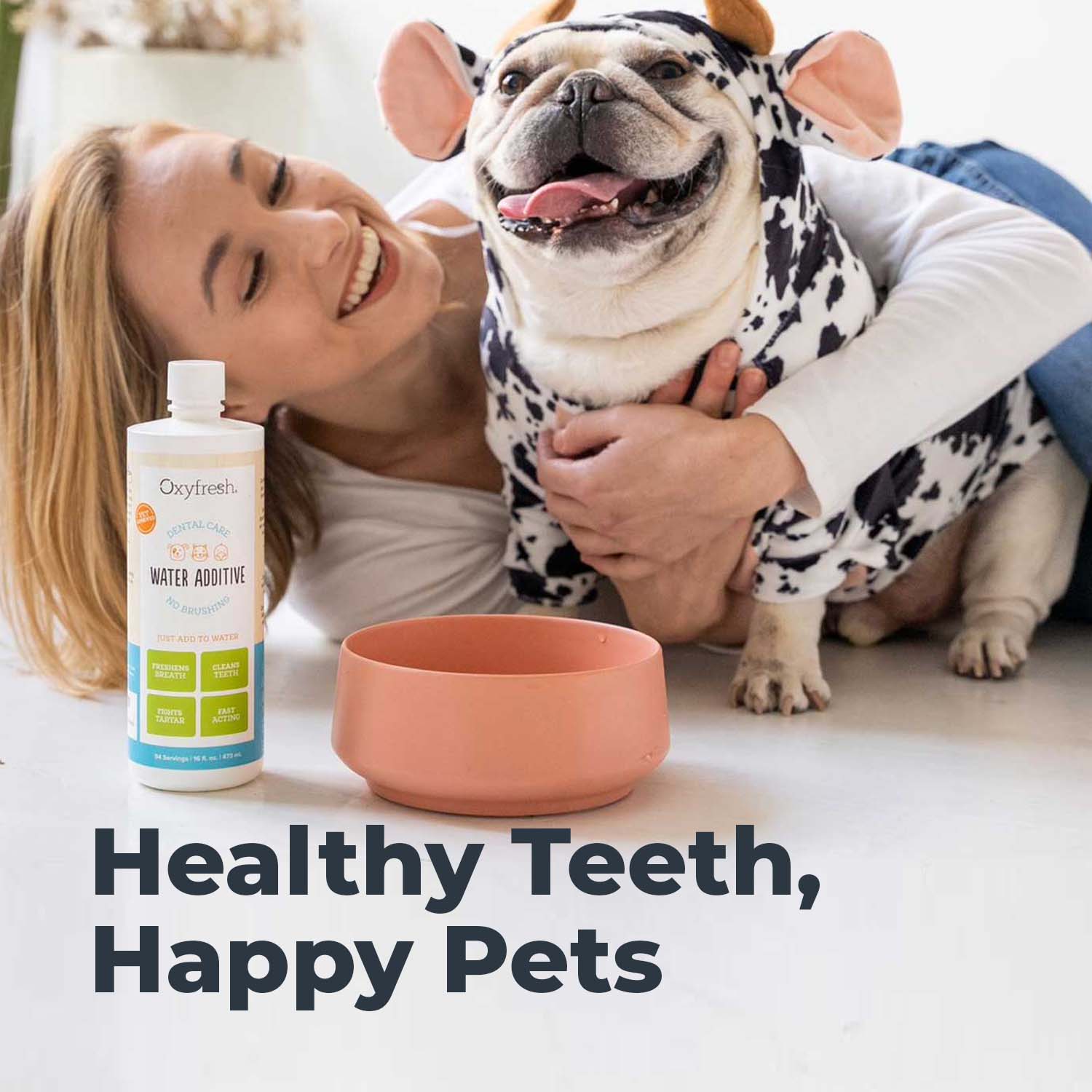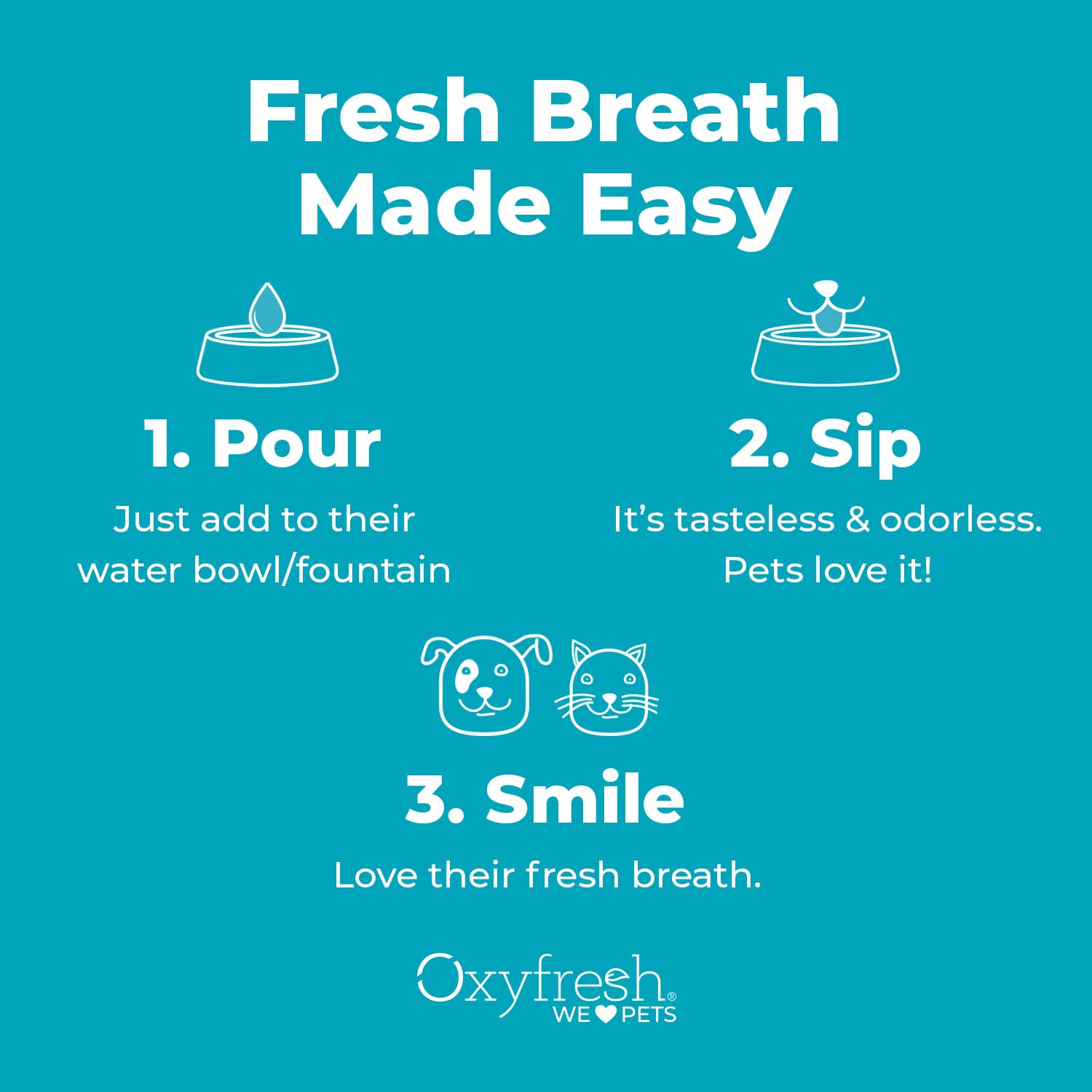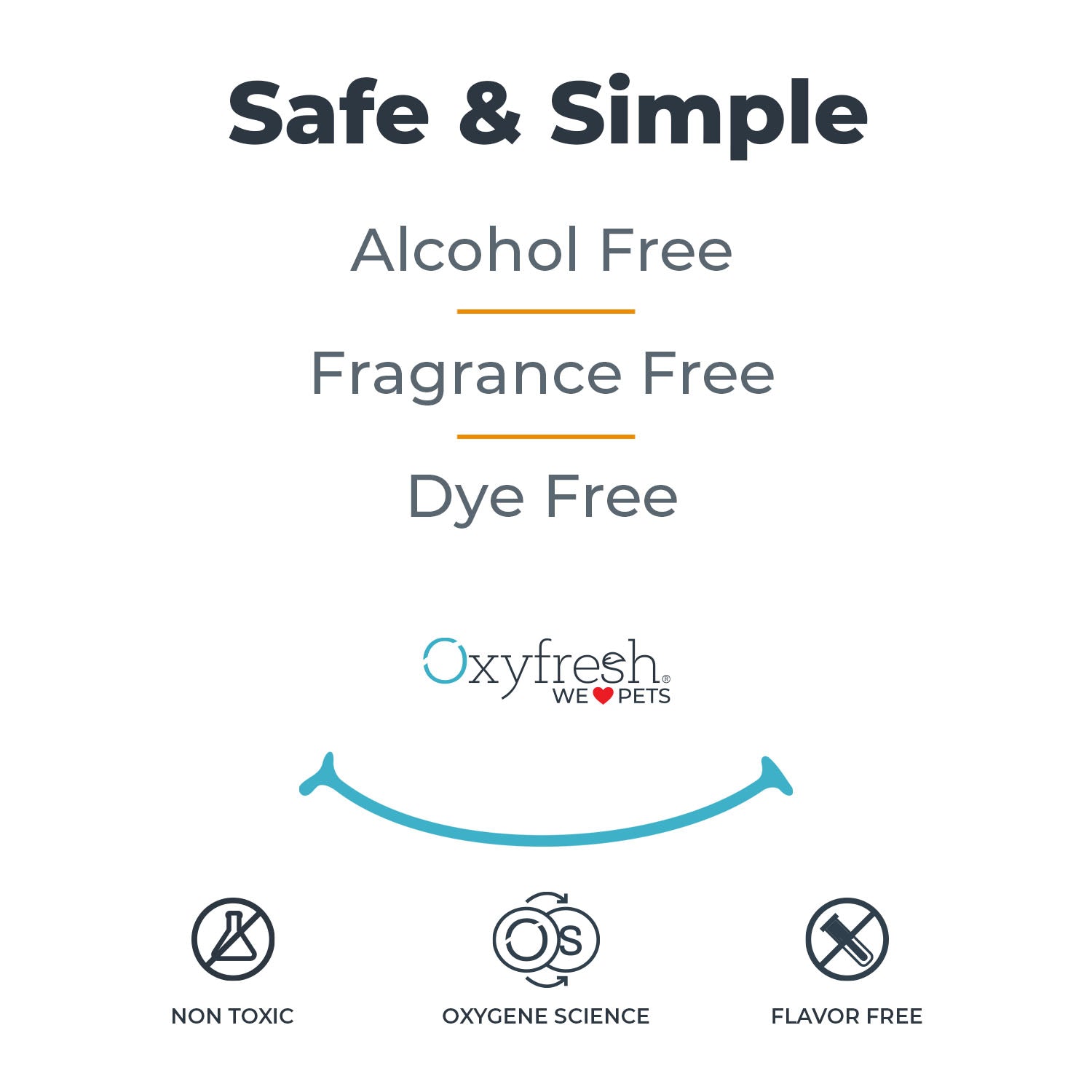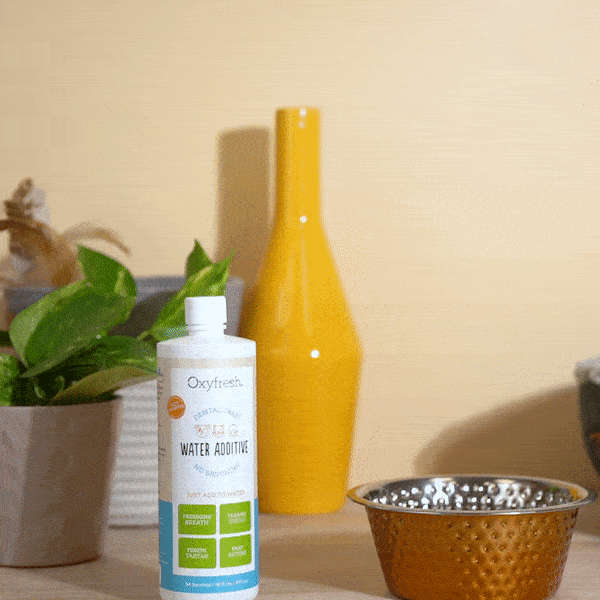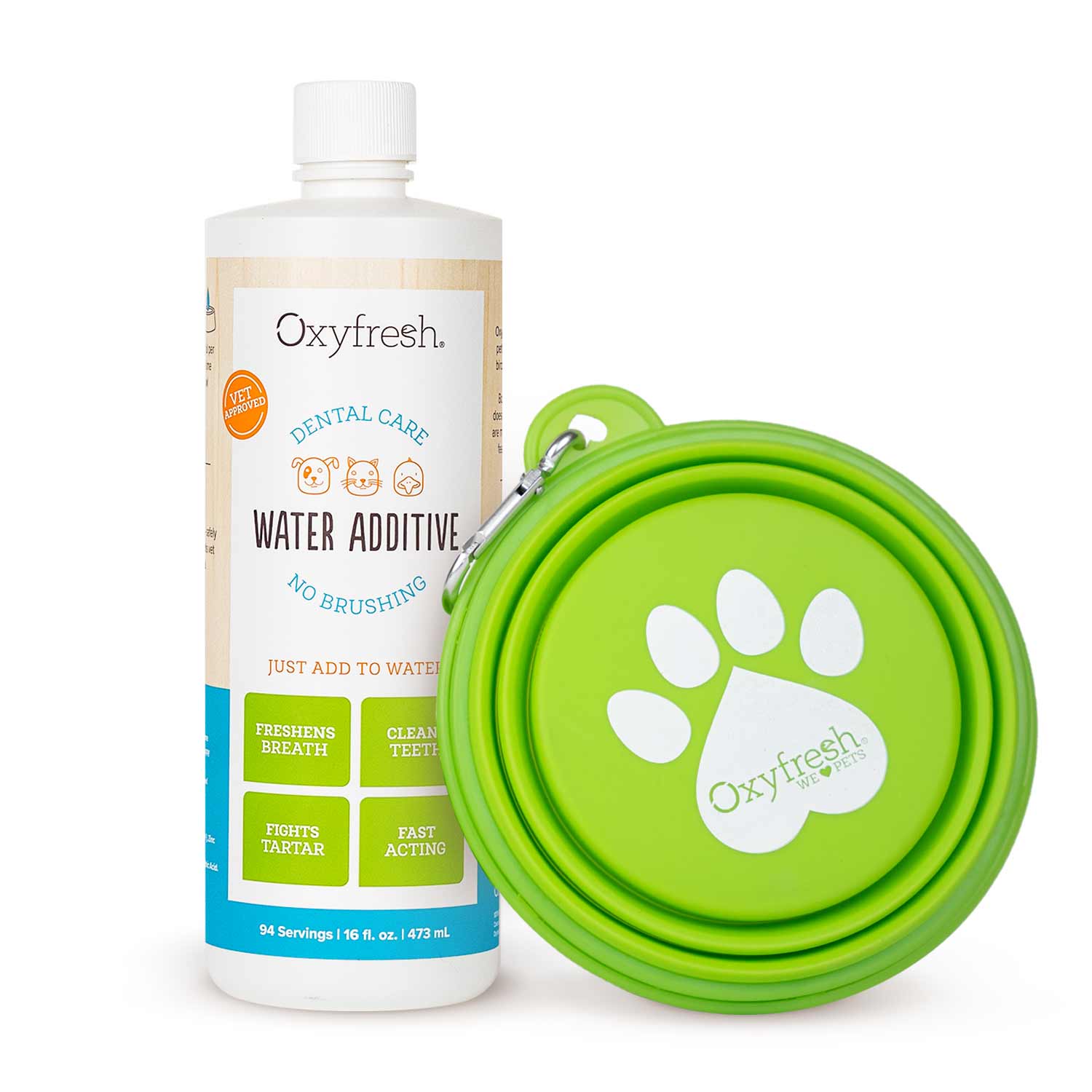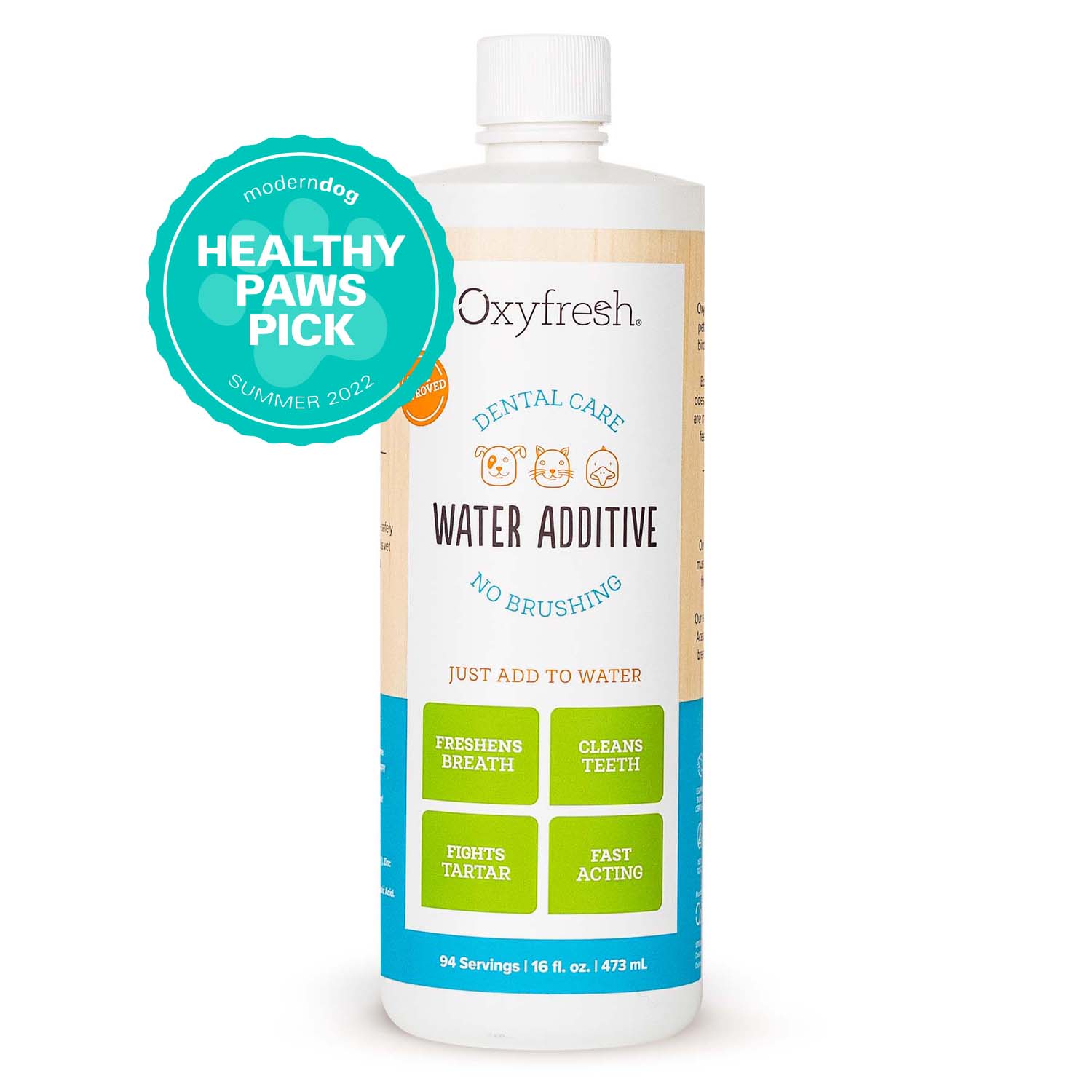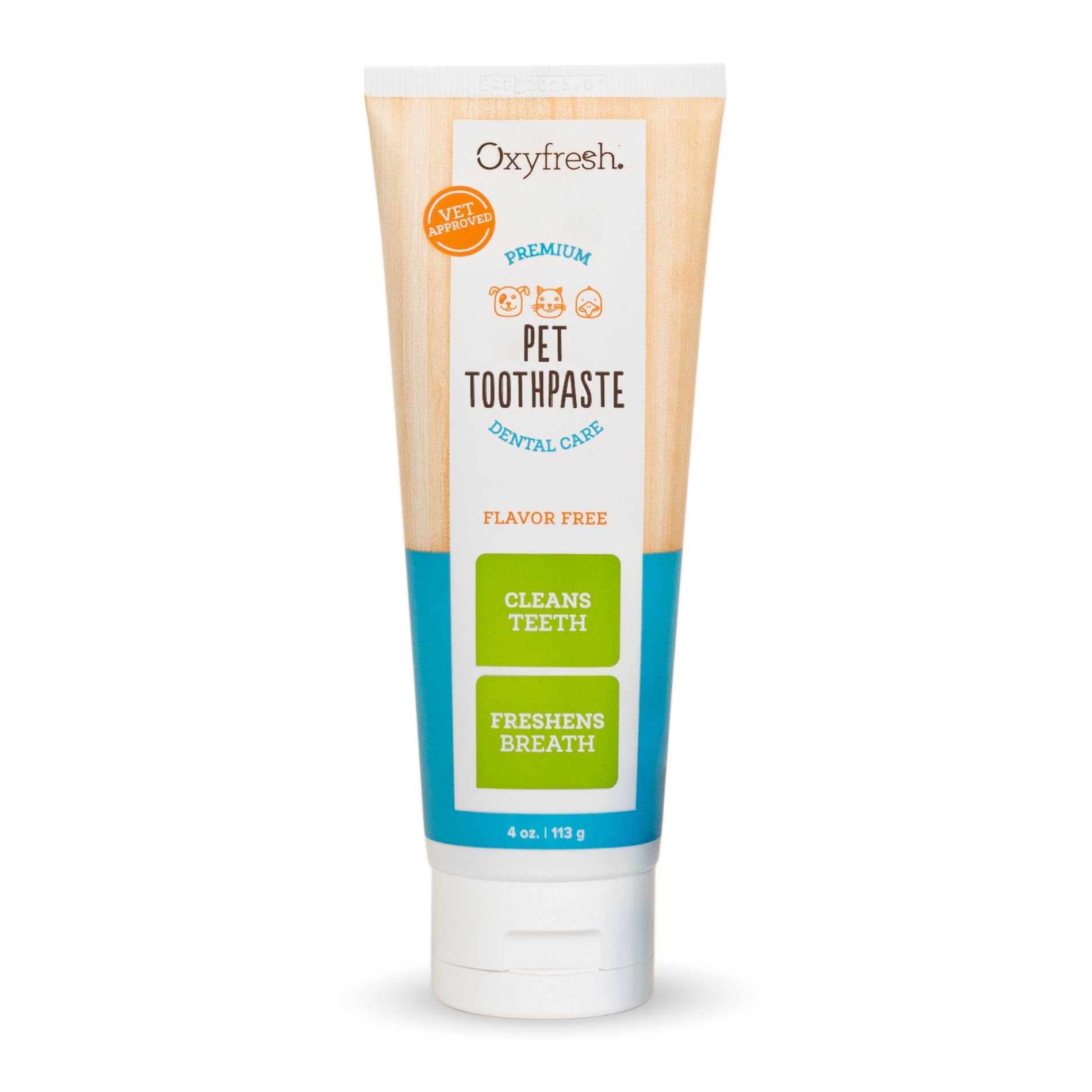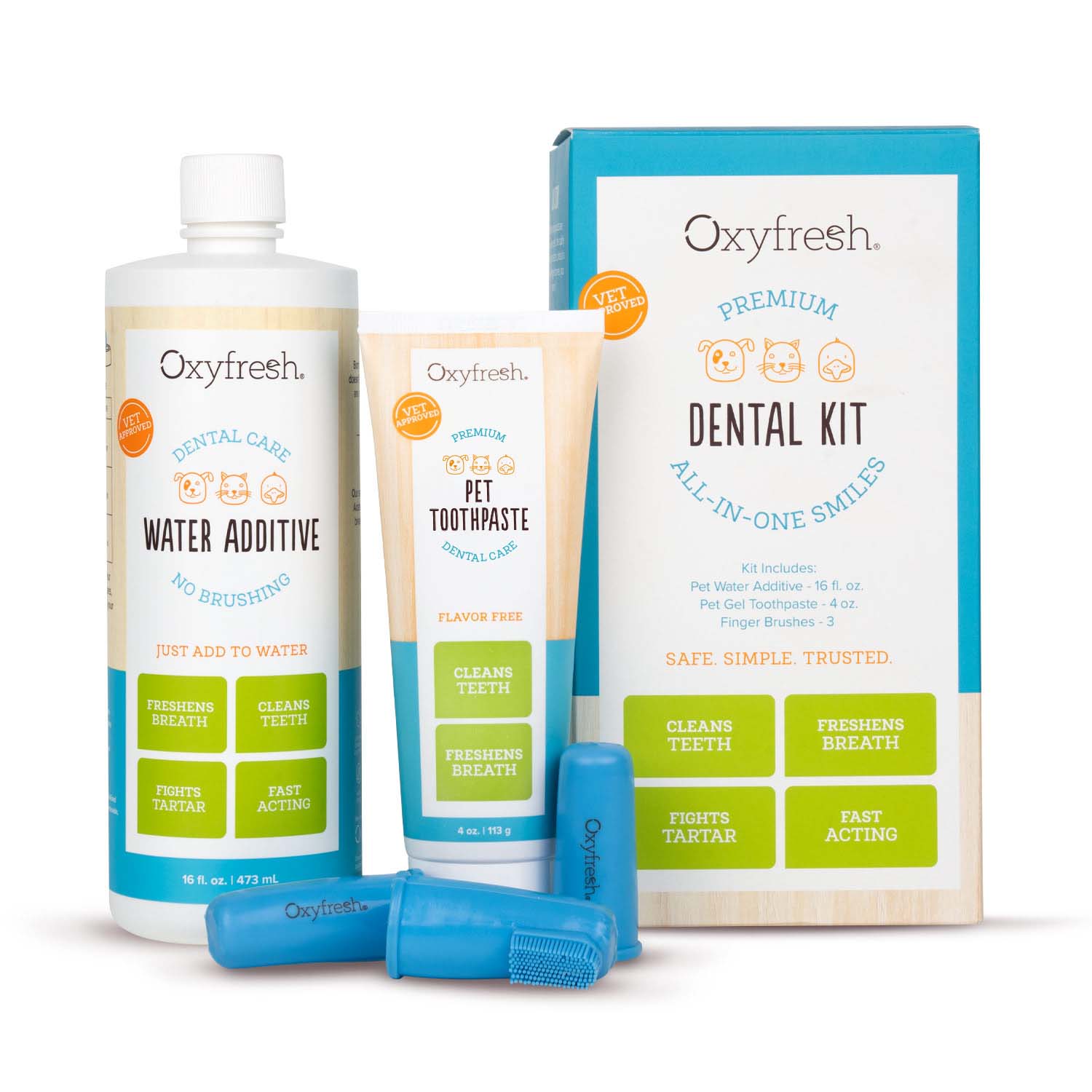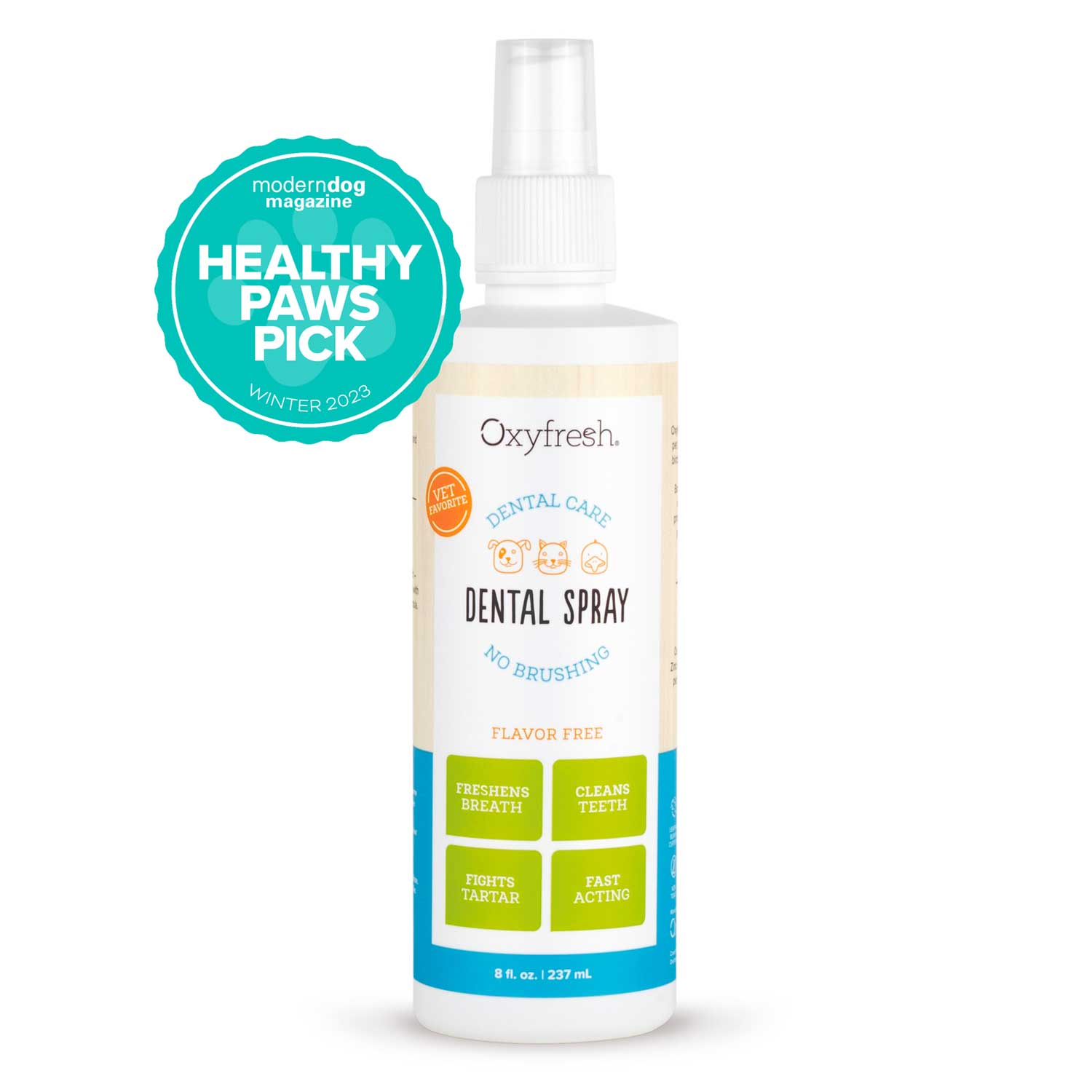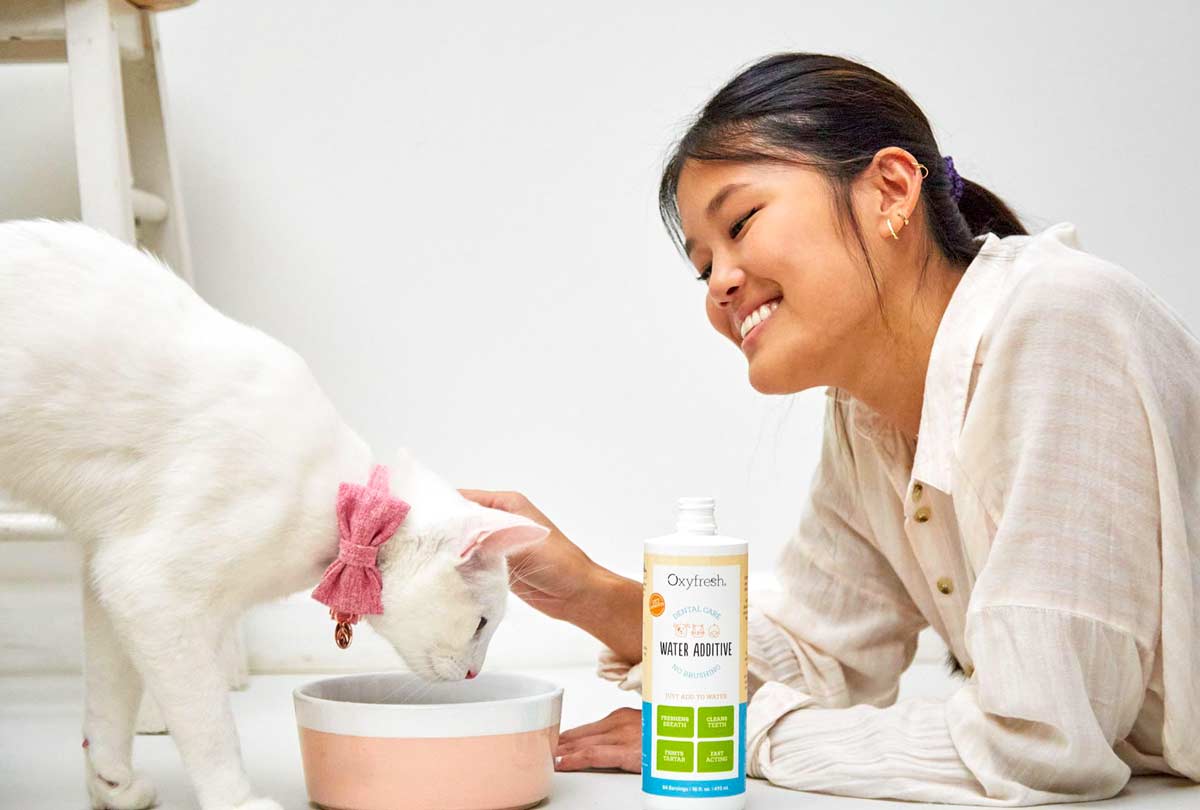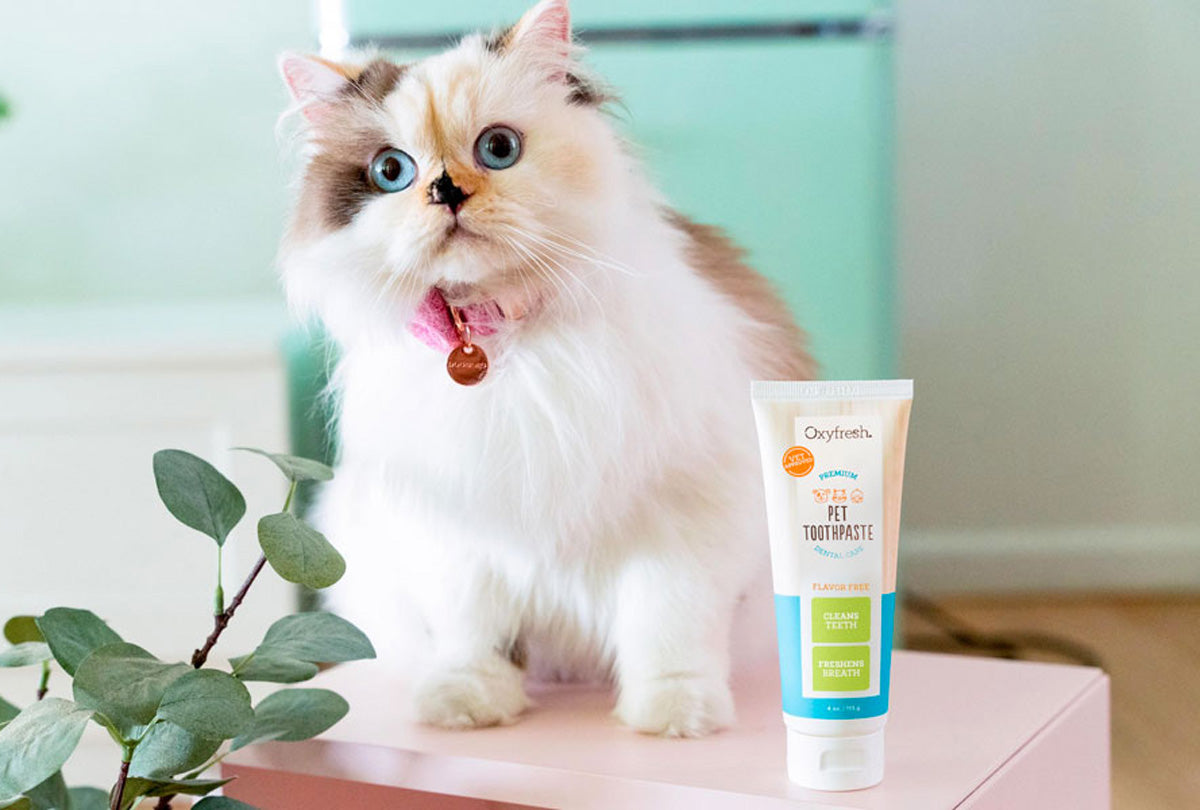We’ve all been there: friends are over and the dog’s all up in their faces. What comes next? Yep ... the dramatic head turns and eww! expressions as they’re "treated" to a blast of stinky dog breath.
If only there was such a thing as dog mouthwash to ensure your pup’s breath could stay fresh at all times ... OH WAIT, THERE IS! Keep reading for the dish on dog mouthwashes.
Does Your Dog Need Mouthwash?
Before the days of dogs and their human parents wearing matching outfits, everyone just chalked bad dog breath up to "one of those things." Today we know better. Bad breath is NOT normal in dogs. In fact, their breath really shouldn’t have a smell at all.
Bad breath is one of the first signs of dental disease in dogs, which can pose big problems for pets, even taking years off their lives. That’s because bacteria in an infected mouth can travel through a dog’s entire body and affect vital organs like the heart and kidneys.
Gum disease impacts 8 in 10 dogs by age 3, so a dog mouthwash is something EVERY pet parent should use if they're not brushing their pets' teeth. (If you do want to brush, check out: How to Brush Your Dog’s Teeth ... Without Losing Your Sanity.)
Signs your pet needs a dog mouthwash
- Bad breath
- Loose or missing teeth
- Yellow-brown tartar buildup on the teeth
- Not wanting to be touched around the mouth
- Difficulty chewing food or just chewing on one side
- Red, inflamed gums (healthy gums should be light pink)
- Bleeding gums (you may notice blood on their rope toys, tennis balls, water dish, etc.)
Are Dogs’ Mouths Clean?
"A dog’s mouth is cleaner than ours!" You’ve likely heard this expression if you or a loved one enjoys slobbery dog kisses from time to time. But is it true?
Actually, no! Dogs have more than 600 types of bacteria in their mouths, which is close to the average bacteria count in a human’s mouth (615). While we do share some types of bacteria, one of the differences is in the bacterium that causes periodontal disease. In humans, that’s P. gingivalis and dogs have its relative, P gulae. (Store that tidbit away for your "Jeopardy" tryout.)
Both bacteria are "dirty" and can cause problems for teeth and gums. So just because you’ve heard that dogs’ mouths are cleaner than ours, and therefore they don’t need dental care, this is simply not true.
Can You Use Your Own Mouthwash on Dogs?
When we think of mouthwash, we may think of gargling for 60 seconds, spitting it out, and gracefully wiping all the dribble off our chins. (For those with kids, there is likely some laughter involved. Parents + gargling noises = awesomeness.)
But even though your adorable furball is a master of many tricks, gargling won’t be one of them. That’s why it’s important to never share your own mouthwash with the dog – not even a splash in their water dish is OK.
Ingredients in human mouthwash, ranging from xylitol (very toxic to pets) to fluoride can make dogs sick. And if you use the "Burnistine" alcohol mouthwash (26.9% alcohol), it could intoxicate your dog and burn their mouth tissue. Additionally, most dogs do not like the taste of mint, which is a prominent flavor in most human mouthwashes.
Choose Your Dog Mouthwash Wisely
There are many brands of dog mouthwash on the market. The thing to remember is dog mouthwash goes right into the dog’s water bowl for them to swallow, not spit out, so you’ll want to be comfortable with the list of ingredients.
The first thing to ask yourself is, "What does my pooch want when it comes to dog mouthwash?"
And the answer is nothing. Nothing meaning no flavors, no dyes and no scents. They want their water to look and taste like (cue the suspense music) ... WATER. OK, sure, they may drink out of brown mud puddles, but their water dish should stay pure!
Think of it this way. You may enjoy a squeeze of lemon in your water from time to time, but if it were like that ALL the time? You’d be longing for the plain stuff to make you feel hydrated. And if your water contained FD&C Blue 1 & Yellow 5 (as some dog mouthwash brands do) just to make it look "pretty"? You’d be a little suspect, and rightfully so.
Bottom line: when you’re shopping for dog mouthwash, steer clear of anything with flavors, from peppermint to green tea and cinnamon. And those colorful dyes have got to go!
How Do Dog Mouthwashes Work?
A quality dog mouthwash should have an ingredient that will actively fight plaque before it hardens into tartar on the dog's teeth. This is the secret to combating both gum disease and dog bad breath.
Keep in mind, plaque formation is unavoidable, because it naturally forms on the teeth after a dog eats.
Plaque is a sticky film filled with bacteria. When it mixes with calcium in a dog’s saliva, the plaque will begin to harden into tartar. And though many people wonder how to soften dog tartar, it’s really impossible at home and requires a visit to the vet for a professional cleaning.
Your best bet is to stop plaque before it can cause harm to your dog’s mouth. A quality water additive (aka dog mouthwash) will help you do this, as will toothbrushing. As for dental treats, use those sparingly and as a supplement. They shouldn’t be a substitute for dog mouthwash or toothbrushing.
Chlorhexidine vs. chlorine dioxide in dog mouthwash for water
For the most effective dog mouthwash for water bowls, look for stabilized chlorine dioxide or chlorhexidine (CHX) – often listed as chlorhexidine gluconate on the label. Both are powerful purifiers that will do what they’re supposed to do inside a dog mouthwash: stop plaque and bad breath. However, they do have some key differences.
- Chlorhexidine has a bitter taste, which is why dog mouthwashes with this ingredient will often have flavors in them. Chlorhexidine gluconate is also known to burn a bit, so keep this in mind if your dog’s gums are already red or sensitive due to gum disease.
- Stabilized chlorine dioxide, on the other hand, is tasteless and odorless, so it doesn’t need to be masked with artificial flavor agents, although some brands may add flavoring anyway (check the label). There’s also no burn associated with it. In fact, chlorine dioxide is used in many public water systems to purify the water and rid it of harmful bacteria. In a dog’s mouth, it works in the same way, neutralizing bacteria that would otherwise cause plaque buildup and bad breath.
Oxyfresh Dog Mouthwash for Water Bowl: Paws Down, The Best
For dog parents looking for the easiest, most effective way to fight plaque and tartar on their pet’s teeth, and keep their breath in finest form, Oxyfresh Pet Dental Water Additive is just what the vet ordered.
Named a 2022 Healthy Paws Pick by Modern Dog Magazine, only Oxyfresh Pet Dental Water Additive is formulated with Oxygene®, a proprietary blend of stabilized chlorine dioxide that works on contact to safely eliminate bad breath and plaque caused by bacteria in your dog’s mouth.
We also added zinc to our special formula to deliver double the bad-breath protection. In addition, zinc helps inhibit tartar (calculus) formation, which is the key to avoiding dangerous gum disease.
Best of all, Oxyfresh Pet Dental Water Additive is picky-pet approved with no flavors, dyes or scents, and so easy to use. Just add to water bowl and call it good!
Your Pooch Will Love Oxyfresh Dog Mouthwash
- No brushing needed
- Free of flavors & scents
- Clean teeth, healthy gums
- Fresher breath with every drink
- USA made & vet-recommended

